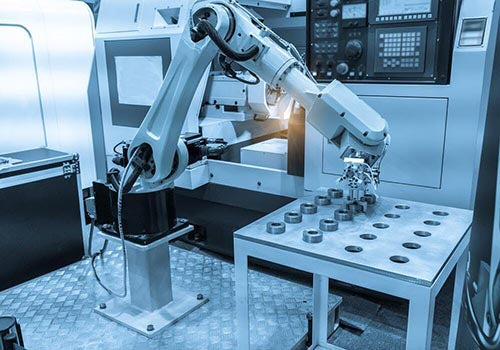
The Origins of CNC Inserts: Exploring its Early Days
Share
The development of Computer Numerical Control (CNC) machines has been a game-changer for manufacturing and engineering industries. The ability to automate machining processes has saved companies time and money, increasing efficiency and productivity. One of the most important components in CNC machines is the CNC insert. This small tool has revolutionized the way we machine hard metals, and in this blog post, we will explore the origins of CNC inserts and their early days.
CNC inserts were first developed in the 1950s when the aerospace industry needed a more efficient way to machine hard metals. The traditional method of using high-speed steel tools was not effective in machining the new, harder materials being developed. This led to the development of a new type of tool using a tungsten carbide insert. The tungsten carbide insert is a small piece of carbide that is brazed onto a steel shank. The insert is designed to be easily replaced when it becomes dull or damaged, reducing downtime and increasing efficiency.
The first CNC inserts had a positive geometry, which meant that the cutting edges were angled in the direction of the cut. This design allowed for better chip control and improved surface finishes. As technology improved, negative geometry inserts were developed, which had cutting edges angled away from the direction of the cut. This design allowed for faster material removal rates and longer tool life.
The development of CNC inserts has come a long way since its early days. Today, CNC inserts are available in a wide range of shapes, sizes, and materials. Some of the most common materials used for inserts include carbide, ceramic, and cubic boron nitride (CBN). Each material has its own unique properties and is designed for specific machining applications. Carbide is the most commonly used material for CNC inserts due to its high hardness and wear resistance.
CNC machines have greatly benefited from the development of CNC inserts. The use of tungsten carbide inserts revolutionized the machining industry and allowed for the automation of manufacturing processes. The ability to quickly and easily replace inserts has greatly reduced downtime and increased efficiency. As technology continues to advance, we can expect to see even more improvements in CNC inserts and their applications.
In conclusion, the development of CNC inserts has had a significant impact on the manufacturing and engineering industries. The use of tungsten carbide inserts has led to the automation of manufacturing processes, reduced downtime, and increased efficiency. As CNC technology continues to evolve, we can expect to see further improvements in CNC inserts, making them more efficient and effective for machining a wide range of materials.




